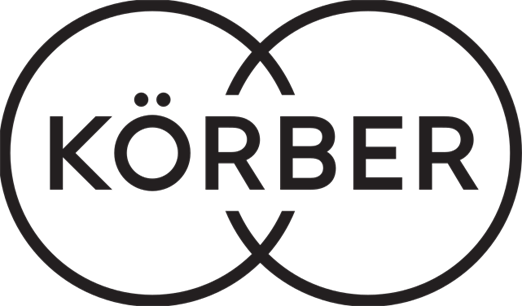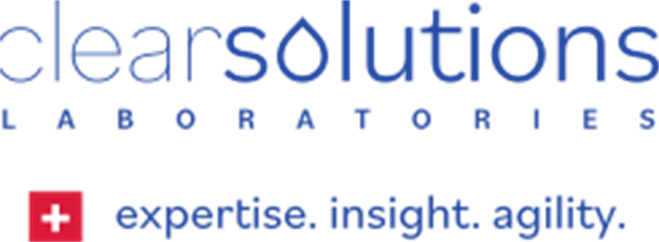
PDA How to Handle Test Sets in Visual Inspection Training Course
Become a Sponsor and/or Exhibitor
Registration Options
Individual Registration
Group Registration
Visual inspection test sets are essential for operator qualification and validation of a visual inspection systems to be compliant with all pharma regulations, GMP requirements, and company specific quality standards.
As test sets are individually designed and developed based on the product specifications as well as the manufacturing processes, no “one-size fits all” solution is possible. Its variability regarding size, content, and purpose makes management along the life cycle of a test set even more difficult. Starting from the creation of a test set to the vision evaluation up to the correct application along the manufacturing process reflects the high level of complexity.
This training course will take place at the Körber Pharma Inspection Site in Markt Schwaben, Germany. In order to fully understand the “why do I need”, “when do I need”, “what do I need” combined with “how do I create”, “how do I apply”, and “how do I manage” a test set, experts will share their expertise based on best practices and years of experiences within the pharmaceutical industry.
Learning Objectives
- Understanding compliant VI test set design, qualification, and lifecycle management: purposes, process, and applications
- Understanding the current regulatory expectations and quality risk management of VI and particle control
- Understanding the different types of defects and their potential impact on quality
- How to develop a test kit for the visual inspection (risk analysis, what defects should be included)
- How to build up a test kit for the visual inspection (practical introduction)
- How to handle a test kit (shelf life, storage and more)
- Hands on experience on manual & automatic inspection
- The importance of a defect sample set for an AVI project
- How to handle DIP on AVI
Note: Registration isn't open yet, but you can still reserve your spot! Simply fill out the form by clicking the Register Now button, and our registration team will reach out to you shortly.
In response to considerable demand, all participants will now be given access to electronic course notes, which may be printed once for use during the course approximately 1 week in advance. Hard copies of course notes will not be provided to participants.
Program Highlights
This two-day training course will take place at Körber Pharma Inspection.
Highlighted Trainers
Key Presenters
Agenda
Discover What's Happening Each Day
Tuesday, 25 February 2025
9:00
Welcome, Introduction, and Collecting Participants' Expectations
9:15
1.1 Introduction to Test Sets for Manual Visual Inspection
- Overview of Agenda of the Training Course
- Goals of the Course
- What Will We Cover
- Terminology Used in the Course
- What Is the Purpose of Visual Inspection (VI) Test Sets?
- VI Operator Training and Qualification
- Current Regulatory Requirements to VI; Regional Differences
9:45
1.2 Practical Considerations for Use and Creation of VI Test Sets
- Different Types of Test Sets – Using the Right Tool for the Job
- Distinction of Test Sets Required for Visual Inspection from Test Sets Required for CCI Testing
- When Should a Test Set Be Created?
10:15
Coffee Break
10:45
1.3 Fundamentals of Test Set Design
- Test Set Design, Creation, and Use (a Process Flowchart)
- Why Is Risk Assessment Needed?
- How Is Risk Assessment Performed?
- Considerations for Test Set Design
- Primary Packaging
- Product Attributes
- Types and Sizes of Defects
- Additional Considerations
- Test Set Size; Defect-Containing and Defect-Free Units
- Defect Libraries
- Types of Defects
- Sizes of Defects
- Defect Categories: Major, Minor, Critical
11:30
1.4 Particles and Container Defects – Practical Aspects
- Overview of Types of Particles
- Spherical Particles
- Irregular Particles
- Particle Behavior (e.g., Adhering vs. Floating Particles)
- Other Defects
- Container Defects (Cracks, Scratches, Leaking)
- Stopper Defects
- Cap Defects or Crimping Defects
- Contaminations (Inside-Outside)
- Solution Defects
12:00
Lunch Break
13:00
1.5 Introduction to Test Sets for Automated Visual Inspection
- Overview of AVI Test Sets – How Are They Different?
- Types of Test Sets
- Important Considerations for AVI
- Test Set for Validation of Automated Visual Inspection Machine, Including AVI Development Test Set
- Test Set for Daily Performance Check of Automated Visual Inspection Machine
- Knapp Test Set
13:30
1.6 Requirements Related to Automated Visual Inspection
- Transformation of the Main Principles from Manual Visual Inspection to Automated Visual Inspection
14:15
1.7 Practical Exercise – Test Set Design (Guided by Trainers)
15:15
Coffee Break
15:45
1.8 Tour to the Körber Vision Laboratory
- Check the Test Set for Completeness
- Detectability of Defects
- Mechanical Setup for Test Set Evaluation
- How Do Particles Behave?
- Definition of Camera Stations and Illumination for AVI
- Creation of Vision Configuration for AVI, Based on Test Set
- Definition of Detection Rate & False Eject Rate of AVI
16:45
Wrap-Up Training Course Day 1
- Q&A for All Questions of Training Course Day 1 (If Not Yet Answered)
- Feedback Session
17:00
End of Training Course Day 1
From 18:30
Get-Together
Wednesday, 26 February 2025
9:00
What Are Your Practical Challenges with Test Sets?
9:15
2.1 Test Sets for Difficult-to-Inspect Products (DIPs)
- General Considerations for Defect Detectability and Additional Regulatory Requirements
- Types of DIPs:
- Lyophilized Products
- ATMPs
- Colored Glass Containers
- Emulsions
- Suspensions
- Turbid Liquids
- Surrogate Solutions Versus Product
9:30
2.2 Technical Challenges with Difficult-to-Inspect Products – Test Set Manufacturing, MVI and AVI-Specific Challenges
- Small-Volume and Large-Volume Containers
- Lyophilized Containers
- Infusion Bags
- Blow-Fill-Seal Containers
- High Turbidity Products
- Colored Solutions and Containers
- Highly Viscous Products
10:30
Coffee Break
11:30
2.4 Test Set Challenges from a Pharma Perspective
- Syringes/Cartridges – Adherent Particles
- Air Bubble and Foaming Products
- Highly Viscous Products
- Glass Defects in Tubular Glass Containers vs. Molded Glass Containers
- Toxic Products
11:45
2.5 Challenges from a Test Set Manufacturer’s Perspective
- Syringes/Cartridges with Sticky Particles (Due to Siliconization)
- Glass Defects in Tubular Glass Containers vs. Molded Glass Containers
- Highly Viscous Products
- Toxic Products
- Foaming Products
- Air Bubble and Foaming Products
12:15
Lunch Break
13:15
2.6 Challenges from the AVI System Supplier’s Perspective
- Sticking/Floating Particles
- Glass Defects in Tubular Glass Containers vs. Molded Glass Containers
- Large-Volume Containers
- Low-Fill Products
- Unstable Containers
- Overlapping Needle Shield
- Amber Glass
13:45
2.7 Facility Tour at Körber Pharma Inspection Site
- Hands-On Exercise 4:
- Demonstration of a "Simple" Automated Inspection Machine
- Hands-On Exercise 5
- Demonstration of a "Sophisticated" Automated Inspection Machine
14:45
2.8 Lifecycle Management of Test Sets
- Required Data and Documentation:
- Certificate of Manufacturing (Expected Characterization Data)
- Qualification Reports
- Training Certificates
- Inspector Re-Qualifications (Different Approaches)
- Lifecycle Management:
- Storage and Shelf-Life
- “Disappearing” Defects
- Replacement of Units
- Re-Qualification
- Multi-Site Setup (Same Product, Different Facilities) – Harmonization of Practices
- Phase-Appropriate Approaches:
- Early Phase vs. BLA and Commercial
- Product-Specific vs. Bracketing Approaches
15:15
Coffee Break
15:45
Wrap-Up Training Course Day 2
- Q&A for All Questions of Training Course Day 2 (If Not Yet Answered)
- Review Results from Practical Exercises Day 1 – Additional Considerations/Modifications
- Knowledge Check – Multiple Choice Test
16:45
End of Training Course
16:30
Final Wrap-Up of Training Course
Promotions and Press
Request Press Pass
Submit Your InformationLocation and Travel
Venue Details and Accommodations
PLEASE READ PDA is not affiliated or contracted with any outside hotel contracting company. If someone other than PDA or the PDA chosen hotel contacts you suggesting that they represent any PDA event, they do not. It is PDA's recommendation that you book your hotel directly through the official PDA chosen hotel that is listed on our web site.
Körber Pharma Inspection
Lilienthalstr. 8Markt Schwaben, Germany Germany
PDA recommends the reservation at the following hotels:
Hotel Gutsgasthof Stangl
Münchener Straße 1
85646 Neufarn/Vaterstetten
Germany
The hotel is located 15 minutes car drive from the training course venue.
Bader Hotel
Heimstettener Str. 12
85599 Parsdorf bei München
Germany
The hotel is located 15 minutes car drive from the training course venue.
How to Get Here
Registration
Pricing Options
Standard Registration
Member Price
€2,200Non-Member
€2,200
ALL PRICES IN EURO (EUR), EXCLUDING VAT.
WAYS TO REGISTER: 1. Online Registration 2. registration-europe@pda.org
PDA MEMBERS: Please remember to log in before registering If you come from a Governmental or Health Authority Institution or from an Academic Organization, please contact registration-europe@pda.org before registering.
If you need to apply for a visa to enter the event country, PDA Europe must be informed of this fact at least 4 weeks before the start of the event.
Sponsors
Sponsors and Collaborators
Exhibitors
Exhibitors and Innovators
Attendee List Email Scam
Unfortunately, emails are circulating that offer to sell attendee lists for many of PDA's conferences and events. These emails are sent by scammers.
Note: PDA does not sell its exhibitor or attendee lists, and no third-party is authorized to distribute or sell any lists related to our events. Statements claiming to offer our attendee lists are fraudulent. If you receive emails that propose to sell PDA conference attendee lists, do not engage with the sender and delete the message immediately.
Become a Sponsor and/or Exhibitor
Amplify Your Presence and Reach Your Customers!
Become a Sponsor
Elevate your brand and maximize your exposure by becoming a sponsor at the PDA How to Handle Test Sets in Visual Inspection Training Course! Connect with industry leaders, showcase your products and services, and establish your company as a key player in the field.
Request InformationBecome an Exhibitor
Boost your brand and visibility by becoming an exhibitor at the PDA How to Handle Test Sets in Visual Inspection Training Course! Connect with industry influencers, showcase your products and services, and position your company as a key player in the field.
Request InformationHave a question or need assistance?
Send us a message, and our team will get back to you shortly. We're here to help!









